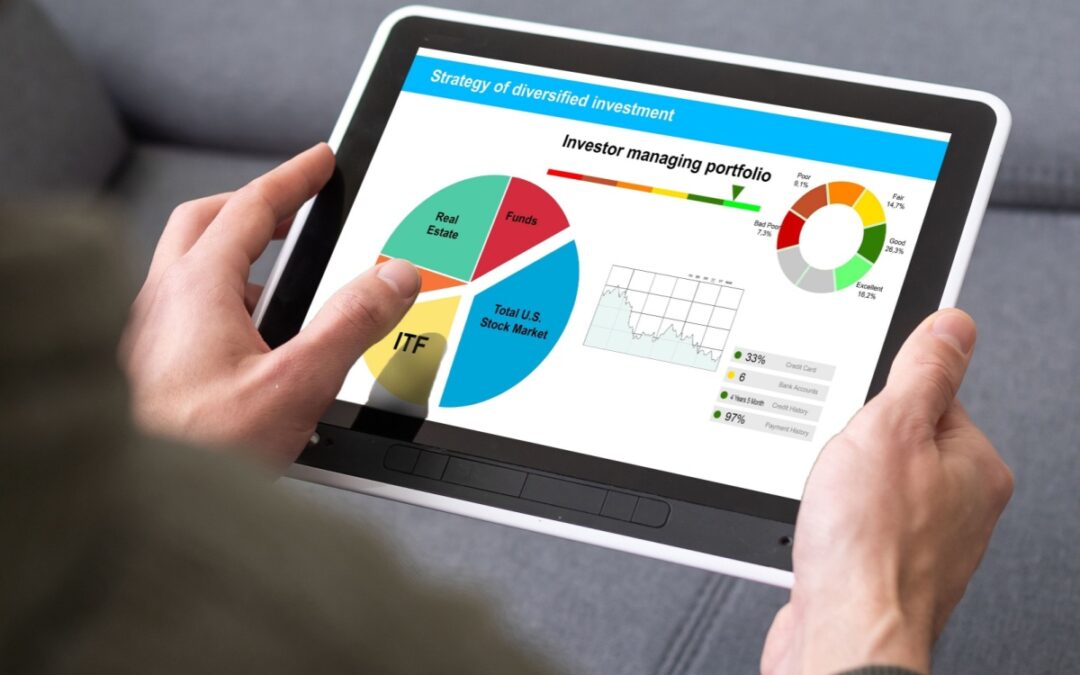Diversification is often referred to as the “only free lunch” in investing because of its double benefit of managing risk and offering the potential for growth.
By spreading your investments across a variety of asset classes, regions, and sectors, you reduce your exposure to any single market or economic event. This means that if one part of your portfolio underperforms, others may help offset the impact, creating a more stable and resilient overall strategy.
But diversification isn’t just a defensive tactic, it can also open you up to wider growth opportunities. By investing broadly, you increase your chances of benefiting from growth in markets or sectors that you might otherwise overlook if your portfolio were too narrowly focused.
Read on to find out why diversification is valuable and how it can improve your investment strategy over the long term.
Diversification reduces your portfolio concentration and can help you avoid “home bias”
“Home bias” is the tendency for investors to favour domestic markets they’re familiar with, often avoiding foreign investments that may seem riskier.
While this approach can feel more reassuring, it can lead you to have an overly concentrated portfolio. This can mean you have greater exposure to local market volatility and that you miss opportunities for growth in global markets.
For instance, in January, the launch of the Chinese AI chatbot DeepSeek triggered a sharp downturn in US markets, particularly in the tech sector. According to Investor’s Business Daily, nearly $1 trillion was wiped from the S&P 500 in a single day, with Nvidia alone losing almost $600 billion in value.
If you had been heavily concentrated in US tech stocks at the time, you would have felt the downturn far more acutely than if you had a globally diversified portfolio spread across different sectors.
By spreading investments across different regions and industries, you could have both softened the blow of the US market dip and benefited from gains elsewhere – such as in the Chinese market – helping to balance your overall returns.
While this is a recent example, one of the few certainties in global markets is their unpredictability.
The chart below shows the ranked annual returns of major global indices between 2013 and 2024.

Source: JP Morgan
As the table shows, past performance is rarely a reliable guide to future returns, and it’s nearly impossible to predict which markets or indices will perform well based on the previous year’s results.
For example, in 2020, the MSCI Asia ex-Japan index grew by 25.4%, while the UK’s FTSE All-Share fell by 9.8%. But in 2021, the tables turned, and the FTSE All-Share gained 18.3%, while the MSCI Asia declined by 4.5%.
If your portfolio had been heavily concentrated in either one of these markets, you’d have experienced significant volatility. That kind of turbulence can tempt investors to pull out of the market at the wrong time, potentially locking in losses and missing out on later recoveries.
By diversifying across global markets and sectors, you reduce your reliance on any one region and help smooth out performance over time. This not only offers more stability but can also make it easier to stay focused on your long-term goals rather than reacting emotionally to short-term fluctuations.
Diversifying across asset classes can improve your stability and shield you from inflation
In addition to diversifying across global markets and sectors, spreading your investments across different asset classes can further improve your portfolio’s stability and overall performance. This strategy can also protect against inflation.
The chart below ranks different asset classes based on annual returns, also between the years 2013 and 2024.

Source: JP Morgan
Just like regional markets, the performance of different asset classes is unpredictable and can fluctuate significantly from year to year.
For example, in 2022, commodities led the market with a 16.1% gain, while growth assets saw losses of 29.1%. The following year, the situation reversed, and growth assets surged by 37.3%, while commodities fell to the bottom with a -7.9% return.
This kind of volatility highlights the importance of diversification, which helps protect your portfolio by smoothing out such fluctuations and providing a more stable, consistent path to growth.
Moreover, spreading investments across different asset classes can help your wealth keep pace with inflation, as some assets perform better than others during inflationary periods. For instance, property often outperforms inflation, making it a potentially effective way to preserve and grow your wealth when inflation is high.
A financial planner can help you diversify your portfolio
A financial planner can work with you to build a well-diversified, balanced portfolio that aligns with your risk tolerance, time horizon, and long-term objectives.
By creating a tailored investment strategy that prioritises diversification, they can help protect your portfolio against market volatility while positioning it to take advantage of growth opportunities.
With the right guidance and a diversified approach, you’ll be better equipped to pursue your financial goals with confidence, resilience, and peace of mind.
To speak to a financial planner, get in touch.
Email hello@solusfinancial.co.uk or call us on 01245 984546.
Please note
This article is for general information only and does not constitute advice. The information is aimed at retail clients only.
The value of your investments (and any income from them) can go down as well as up and you may not get back the full amount you invested. Past performance is not a reliable indicator of future performance.
Approved by Best Practice IFA Group 09/04/2025

